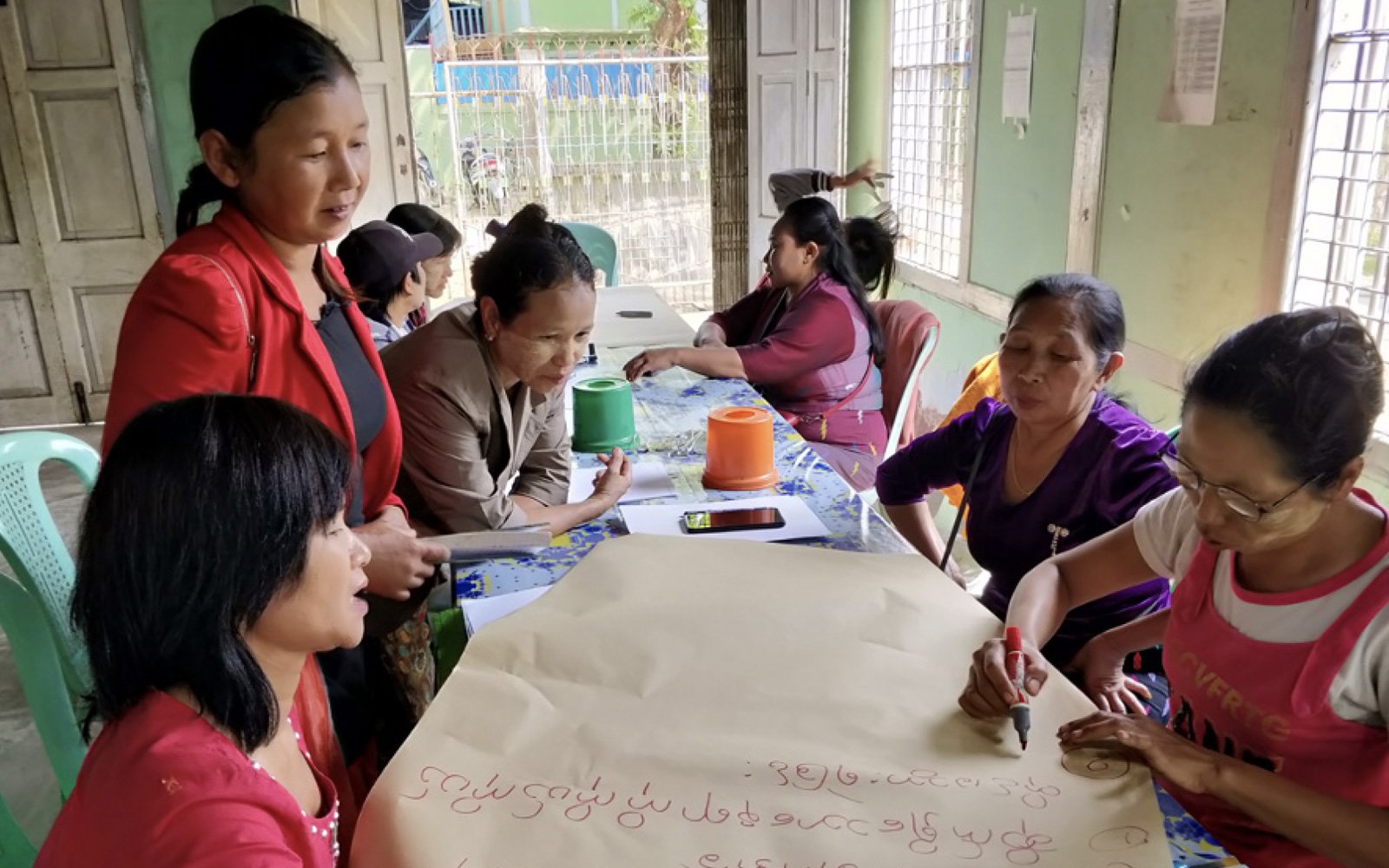How was the group formed and what are the main reasons?
In Myanmar women who use/inject drugs have a higher risk of blood borne virus transmission, higher mortality rates and experience additional layers of stigma and discrimination compared with men who inject drugs. Most women who use drugs (WUD) in Myanmar have difficulty in accessing harm reduction services because of being ‘shamed and blamed’ due to their status as ‘deviant’ drug users and ‘bad women’. WUD experience physical and emotional abuse from a range of people from their communities including relatives, husbands, men who use drugs, police and some local anti-drug civil society organizations. Before peer groups were established, informal social WUD networks shared news and information amongst themselves. Some members of these networks raised their experiences and perceptions about barriers to accessing services with different health service provider organizations. In September 2018, with the support of members of the WUD community, MdM formed the Women’s Advisory Group (WAG) to address the needs of WUD.
Why did MdM decide to assist with development of a women who use drugs advisory group?
It has become increasingly clear that WUD have a central role to play in advancing community empowerment and community-led interventions to enhance the quality of services and build the sustainability of HIV programmes. Considering the importance of increasing coverage and enhancing the quality of harm reduction services for WUD and the sexual partners of men who use drugs, MdM adopted the strategy of providing gender specific services. A key component of this strategy was the formation of the WAG. MdM not only facilitated the formation of the WAG but importantly continues to support the WAG to work more efficiently for the community and with the community.
Can please describe the role of the Women’s Advisory Group?
The role of WAG is mainly to provide advice and lend support to MdM harm reduction programs to improve service reach to women and to support participation and involvement of WUD in all aspects of program. Overall, the role of the WAG is to identify gaps in services for WUD and to communicate this information with service providers. The feedback provided by the WAG is crucial for harm reduction providers so they are aware of priority issues and in turn respond to the specific needs of WUD.
What methods are used by the advisory group to consult with women of who use drugs and can you give some examples of how the advisory group has influenced service delivery for women?
The WAG facilitates small community consultations to collect information concerning the difficulties, service gaps and challenges women experience in accessing health care services. This information is documented and reported to respective organizations. An example of the how the WAG has influenced service delivery for WUD involves the implementation of gender-based violence prevention and response services. These much-needed services commenced following the WAG advocacy with relevant organizations for the urgent need to respond to this problem.
What change/s or addition/s do you think has had the most impact on how women access services?
An important way for us to reach women is by working with peers (women volunteers) to engage with communities of WUD to ensure effective delivery of services. For example, 3 years ago, the stigma surrounding WUD plus the fact that most service provider staff were men created significant challenges for women to access harm reduction services. Now, we have 13 women peers at 1 drop in centre supporting more than 15 WUD and partners of people who inject drugs access health care services.
Having more women on staff enabled woman-to-woman communication, creating a more comfortable environment for women to discuss their concerns and establish rapport and build trust between themselves. Secondly, the impact of women specific days has had a big impact on how women access and engage with services. Since most of the drop in centres are male dominated spaces, it was difficult for WUD to attend. During 2018, women only days were initiated so that WUD could have their own safe space where they feel comfortable. The practice is a success according to both the WAG and women attending the centre on these days. Women using the service report they are able to communicate openly about what is happening in their lives without fear of being judged or worry of being humiliated because of their drug use.
What advice would you provide for others who wish to support establishment of a women who use drugs advisory group?
For the WAG, capacity building is essential. The group is comprised of active members who have a strong will and commitment to work for and with the community. Training and capacity building is important to support these women acquire the range of skills and experience to help them work more efficiently and confidently. Unfortunately, to date only a small number of capacity building workshops have occurred. These have included group management and facilitation modules alongside specific technical trainings such as gender based violence, and Training of Trainers. Training supports are fundamental to ensure that the advisory group can organise and mobilise effectively in their work to create positive change for WUD.
In addition to the vision and mission to work for and with the community, the realities of limited financial and material resources constrain the activities of the WAG. Therefore, income generation activities, strategic fund raising and grant writing skills are also important elements.


